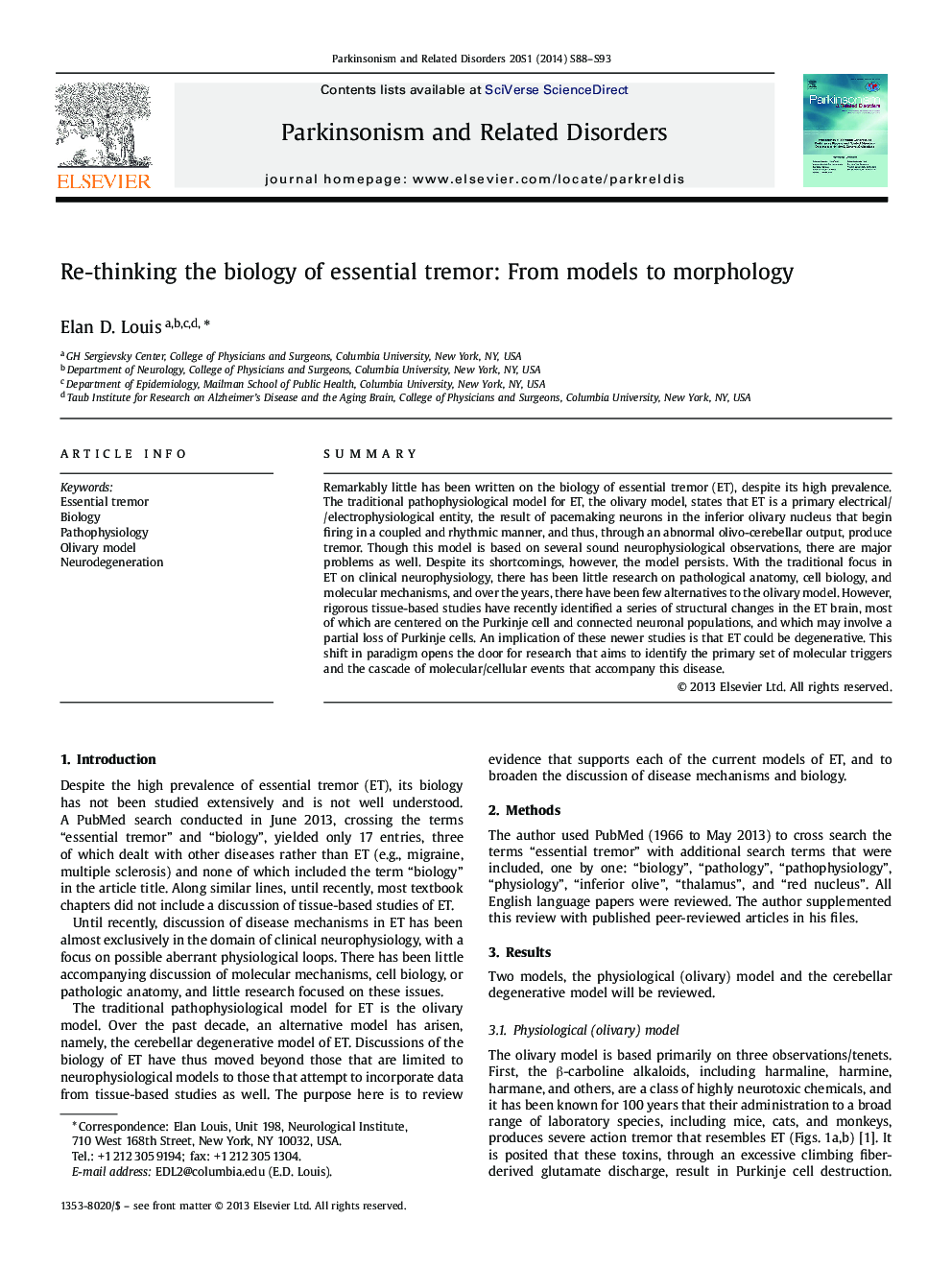| کد مقاله | کد نشریه | سال انتشار | مقاله انگلیسی | نسخه تمام متن |
|---|---|---|---|---|
| 1920600 | 1048723 | 2014 | 6 صفحه PDF | دانلود رایگان |
SummaryRemarkably little has been written on the biology of essential tremor (ET), despite its high prevalence. The traditional pathophysiological model for ET, the olivary model, states that ET is a primary electrical//electrophysiological entity, the result of pacemaking neurons in the inferior olivary nucleus that begin firing in a coupled and rhythmic manner, and thus, through an abnormal olivo-cerebellar output, produce tremor. Though this model is based on several sound neurophysiological observations, there are major problems as well. Despite its shortcomings, however, the model persists. With the traditional focus in ET on clinical neurophysiology, there has been little research on pathological anatomy, cell biology, and molecular mechanisms, and over the years, there have been few alternatives to the olivary model. However, rigorous tissue-based studies have recently identified a series of structural changes in the ET brain, most of which are centered on the Purkinje cell and connected neuronal populations, and which may involve a partial loss of Purkinje cells. An implication of these newer studies is that ET could be degenerative. This shift in paradigm opens the door for research that aims to identify the primary set of molecular triggers and the cascade of molecular/cellular events that accompany this disease.
Journal: Parkinsonism & Related Disorders - Volume 20, Supplement 1, January 2014, Pages S88–S93
